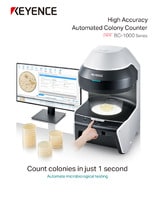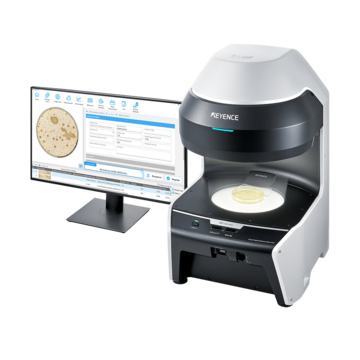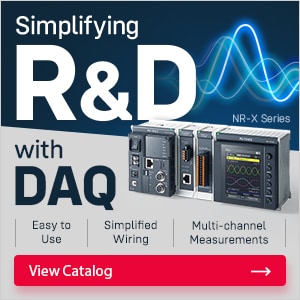Comparing Colony Counting Accuracy: Automated Colony Counters vs. Manual Counting
Traditionally, bacterial colony counting has been performed manually, with lab technicians counting colonies by eye on agar plates or growth film (e.g. 3M™ Petrifilm™ plates). However, the introduction of automated colony counters has revolutionized the process, offering improvements in accuracy, efficiency, and traceability. This article explores how automated colony counters compare to manual counting methods in terms of accuracy and overall benefits.
Manual Colony Counting: The Gold Standard?
For decades, manual colony counting has been the standard approach in microbiological analysis. It involves a trained technician visually inspecting agar plates and film, identifying individual colonies, and recording their number. This method, while straightforward, is time-consuming and prone to human error. Factors like eye strain, visual impairment, fatigue, and subjective judgment can lead to variations in results, particularly with dense or complex colony patterns.
Additionally, manual colony counting is limited by the technician's experience and the need for rigorous training to ensure consistency. The human eye is only able to resolve, under good conditions, objects that are around 100 microns in size, which means that colonies of this size or smaller are difficult or impossible to see when counting. This not only affects the overall colony volume being counted but makes it quite challenging to reproduce those counts and increases the length of the culture process in order to ensure that colonies are sufficiently large.
The BC-1000 Series Automated Colony Counter can accurately detect colonies as small as 50 microns.
Despite its drawbacks, manual colony counting is still widely used due to its simplicity and the absence of initial investment in more sophisticated equipment. It is also flexible, as skilled technicians can apply their expertise to count colonies in challenging conditions, such as mixed cultures or plates with irregular growth.
The BC-1000 Series Automated Colony Counter can be a cost-effective solution to your counting needs – request pricing to see what options are available.
Curious about our pricing?
Click here to find out more.
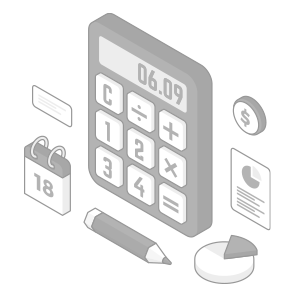
Automated Colony Counters: A Technological Leap
Automated colony counters have emerged as a powerful alternative to manual methods, leveraging advanced imaging technology and software algorithms to accurately count colonies on agar plates, with some systems able to accommodate growth films and other media as well. These systems typically consist of a high-resolution camera, an imaging platform, and sophisticated software capable of distinguishing colonies from the background.
Some advanced models can also identify different colony types, providing additional data beyond simple counts.
The BC-1000 Series Automated Colony Counter can ignore residue and markings from lot codes when counting colonies.
The accuracy of automated colony counters is one of their primary advantages. By eliminating human error and variability, these systems can deliver consistent and repeatable results.
Automated counters are particularly beneficial in high-throughput environments where large numbers of plates must be analyzed quickly. The ability to process hundreds of plates in a fraction of the time required for manual counting dramatically increases laboratory efficiency.
Moreover, automated systems enhance traceability, a growing concern in regulated industries like pharmaceuticals and food safety. Digital records of each plate, along with metadata such as date, time, and operator identity, ensure a robust audit trail. This traceability is crucial for complying with stringent regulatory standards and conducting thorough investigations in the event of contamination or quality control issues.
The BC-1000 Series Automated Colony Counter even captures an image of the plate being counted for increased traceability. Contact us to learn more.
Contact us to learn more about how our advanced technology can help take your business to the next level.
Contact Us
Comparing Accuracy: Manual Colony Counting vs. Automated Colony Counters
Numerous studies have compared the accuracy of automated colony counters to manual methods. Generally, automated systems are found to be as accurate, if not more so, than manual counting, especially in routine applications. For example, when dealing with plates containing a high density of colonies or colonies that are difficult to distinguish due to overlapping, automated counters often outperform human technicians.
However, the accuracy of automated systems can vary depending on the specific model and software used. High-end systems with advanced algorithms and imaging capabilities tend to offer the best accuracy, while lower-cost models may struggle with more complex plates or be unable to count on films or other media. Nonetheless, even lower-end automated counters can provide a level of consistency that manual counting cannot match.
One limitation of automated systems can be their difficulty in handling certain types of colonies, such as those with irregular shapes, faint staining, or embedded in the agar. In these cases, a manual review or a hybrid approach—where automation is used for initial counting followed by manual verification—can be beneficial.
The BC-1000 Series Automated Colony Counter uses three different algorithms for shape detection, core detection, and separation/extraction to ensure the most accurate counts – even on difficult samples.
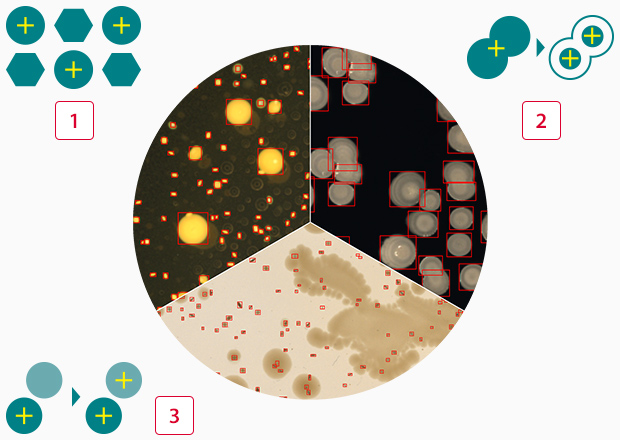
-
1Shape analysis algorithm
Shape analysis makes it possible to ensure only colonies are counted. -
2Core detection algorithm
Overlapping colonies are accurately detected and counted. -
3Separation and extraction algorithm
Colonies are accurately separated from background information for counting.
We’re here to provide you with more details.
Reach out today!

The Future of Colony Counting
Automated colony counters represent a significant advancement in microbiological analysis, offering improvements in accuracy, efficiency, and traceability over manual methods. While manual counting remains a viable option in many labs, particularly those with lower workloads or where budget constraints exist, the trend is clearly toward automation.
As technology continues to advance, the accuracy and versatility of automated colony counters will only improve, further solidifying their role in modern laboratories. For industries where precision and traceability are paramount, automated systems are becoming indispensable, marking a shift away from manual methods and toward a more standardized and reliable approach to colony counting.
Interested in seeing how our BC-1000 Series Automated Colony Counter can give you faster, more accurate, and traceable colony counts? Request an onsite or virtual demo of our system to speak with a product specialist today!
Discover more about this product.
Click here to book your demo.


